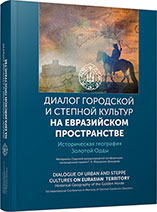Изображение бассейна Волги и Каспия на европейских картах XIV—XVI вв.
Representation of the Volga Basin and the Caspian Sea on 14—16th-century European Maps
Author(s): Igor V. Volkov
Subject(s): History, Geography, Regional studies, Historical Geography, Maps / Cartography, Middle Ages, 13th to 14th Centuries, 15th Century, 16th Century
Published by: Издательский дом Stratum, Университет «Высшая антропологическая школа»
Keywords: Volga River; Caspian Sea; maps by Claudius Ptolemy; medieval maps; Catalan and Italian cartographic tradition
Summary/Abstract: The paper discusses how features of the Volga River, the Lower Volga region, the Caspian Sea, and the adjacent territories are represented on 14th—16th century medieval European maps executed according to different cartographic traditions. In the 14th—15th centuries the ancient tradition was succeeded by a fundamentally new step: the appearance of the first nautical charts associated with the actual exploration of the Volga and the Caspian Sea regions by the Europeans. In this respect, Italian- and Catalan-style maps stand out for the manner the Caspian Sea and its adjacent area were represented. However, all of them are characterized by significant inaccuracies, although Italian-style maps are seemingly closer to the reality. The Turkish conquests of the 15th century greatly limited the penetration of the Europeans to the East, which led to the revival of the cartographic tradition that had stemmed from Claudius Ptolemy, and to the emergence of various compilations.
Book: Диалог городской и степной культур на Евразийском пространстве. Историческая география Золотой Орды
- Page Range: 156-160
- Page Count: 5
- Publication Year: 2016
- Language: Russian
- Content File-PDF

